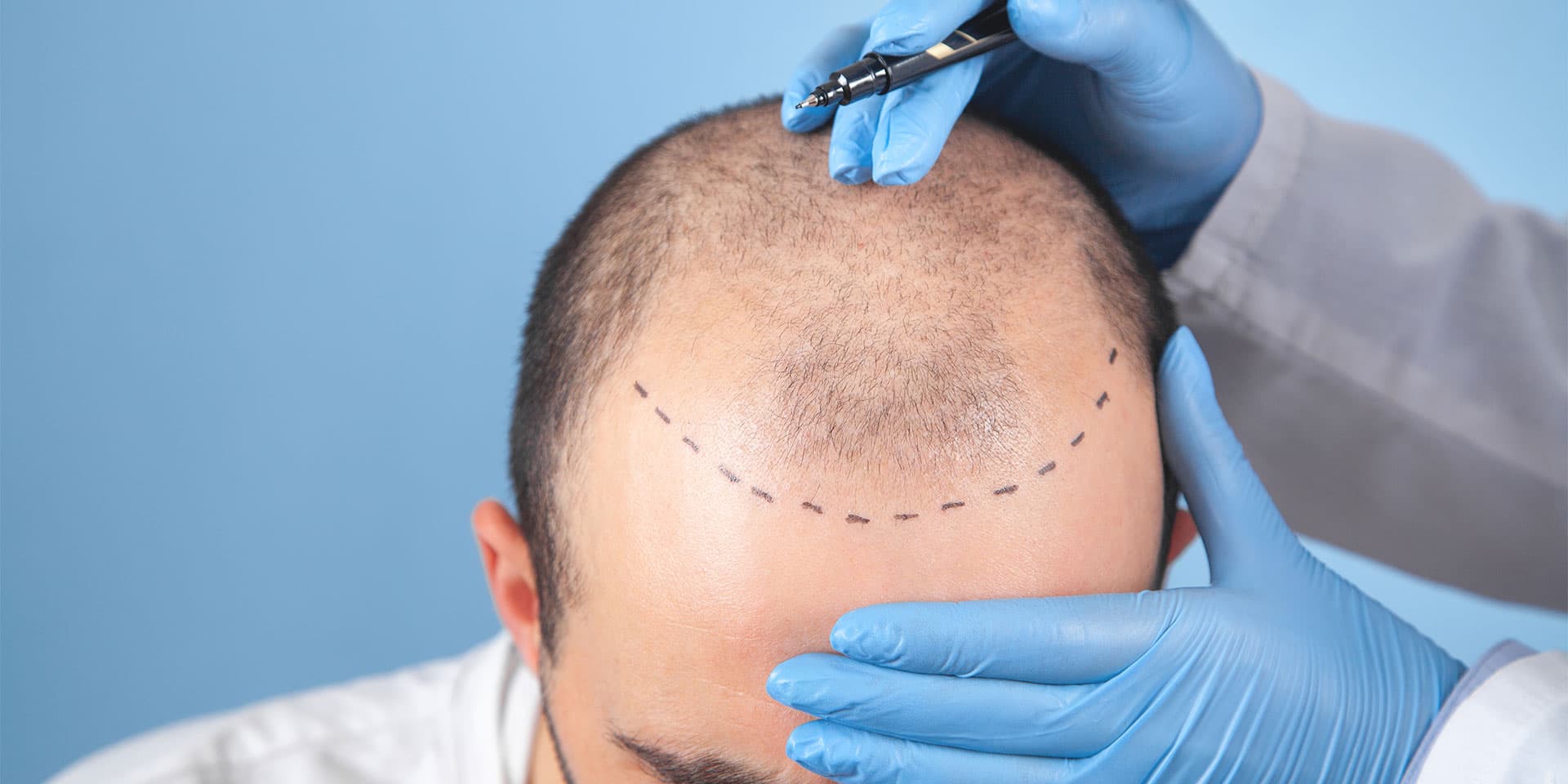OurServices
Basic Hair Transplant

A hair transplant is a procedure designed to restore an individual’s lost hair line. It involves extracting hair from one part of the head, usually from the back of the head, where the hair is resistant to balding. Known as the ‘donor area’, hair follicles are extracted and implanted into the area where there is balding or lack of hair which is called the ‘recipient area’. The most common techniques used are the Follicular Unit Transplantation (FUT) and the Follicular Unit Extraction (FUE).
PRE-PROCEDURE
The patient’s scalp is thoroughly examined and the donor area and the recipient area are identified and the best approach is determined. Then, a thorough review of the patient’s medical record is taken to determine if the patient is medically fit for the hair transplant.
The patient is fully briefed about what medications he/she should be taking and medications to avoid. These are usually anti-inflammatory drugs like Aspirin which can lead to an increase in bleeding. Additionally, the patient is asked to stop all harmful habits like smoking and drinking as they negatively affect the healing process.
PROCEDURE
The donor area is trimmed and prepared for harvesting by injecting local anaesthesia to minimize discomfort for the patient. The hair follicles are now harvested by using either of the two commonly used harvesting methods, FUT and FUE, which will be determined by the doctor.
The surgeon now makes precise, V-shaped incisions on the recipient area. The sharpness and accuracy of the sapphire blades enables the surgeon to make incisions with very little tissue damage and bleeding.
Follicular Unit Transplantation (FUT Hair Transplant)
A strip of hair follicles is taken from the donor area, usually from the back of the head. The strip is then dissected into separate follicular units with each unit containing 1-4 hairs. After implanting, the recipient area is sutured close leaving a straight-line scar on the scalp.
Follicular Unit Extraction (FUE Hair Transplant Procedure)
Instead of taking a strip from a donor area like the FUT method, a punch tool is used to extract individual hair follicles from the donor area. As a result, the scars from this procedure look like small dots and not a straight line.
The sapphire hair transplant technique requires a lot of experience and know-how to perform and anyone considering the technique should make sure the surgeon is capable of handling such a demanding technique.
In both methods, the doctor makes sure the hair follicles are placed at an angle so that when the follicles grow fully, it looks natural on the person.
The cost for a Follicle Unit Extraction depends upon the number of hair follicles involved in the procedure and typically, the more grafts required, the higher the overall cost.
POST-PROCEDURE
The scalp is bandaged and the patient is given clear instructions on how to lead life for the next few weeks. Antibiotics and painkillers are prescribed to reduce pain and improve healing.
In the next few days, all bandages are removed and the patient might observe swelling, redness, and crusting on the recipient area.
In the case of a FUT hair transplant, the suture is removed after 10 to 14 days after the procedure.
For certain individuals, the planted hair follicles might go through a temporary phase of shedding. This usually happens a few weeks after the procedure. Fortunately, new hair begins to grow within the next few months.
Regular follow-up appointments are scheduled with our doctors and the patients are advised on hair care practices and are prescribed medications like minoxidil or finasteride to improve the results.
New hair growth will be noticeable in 3 to 4 months’ time with substantial growth observed after 6 months. The end result of the hair transplant will only be properly visible after a period of 12 to 18 months when the hair follicles are fully grown and matured.
There are still a few things to keep an eye on; those are scarring: FUT hair transplant leaves a straight (linear) scar on your scalp and FUE hair transplant leaves a dot-shaped scar on your scalp. Uneven Growth: Hair might grow unevenly for the first few weeks but eventually evens out over time. Infection: Any surgical process involves taking the risk of catching an infection. A hair transplant is no different. However, at MAX hair clinic, we make sure all these factors are minimized and taken care of, ensuring a fulfilling hair transplant experience for our patient.




